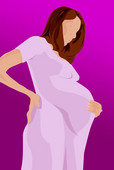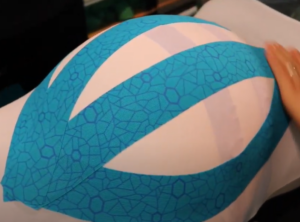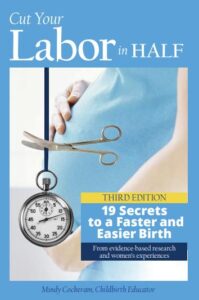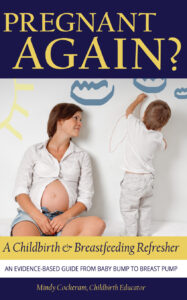.
Private Childbirth & Breastfeeding Education
Providing private in-person and virtual Childbirth & Breastfeeding Classes for a positive birth experience. Click Private Class Enquiry for more information.
Women in my childbirth and breastfeeding classes find pregnancy to be a time of great excitement and anticipation. Underneath the surface however, pregnancy also brings worry, sleep deprivation, changes to lifestyle and decision making. Women are bombarded with media images of the perfect pregnancy and often carry on working and exercising up until labor begins.
The pregnant woman experiences changes to her hair, nails, skin, and feet to name a few. She is also roughly 1°F warmer than the rest of the population. Although moderate exercise is deemed beneficial (ACOG, 2020), the pressure to continue activities as normal puts a strain on even the fittest body. And not only is her belly getting bigger to accommodate a growing baby but the extra weight causes an increased curvature of her spine. In class we ask partners to try on the sympathy belly to give them an idea of how it feels to carry, bend over, etc with an extra 20lbs+ attached to your midriff.

That extra weight and curvature can cause a myriad of problems including pain from the stretching of the round ligaments (two cord-like structures that connect the front of the uterus to the groin), weakness and separation of her diastasis recti (the ‘six pack’ muscles) and inflammation in her pubic symphysis (pelvic girdle pain). It is common for women in my classes to describe these aches using words like burning, lightning, stabbing and numbing. We discuss potential ways to avoid making the problem worse like using a birth ball when seated, sustaining good upright forward posture, sleeping with pillows or a knee separator, and avoiding certain stretches and movements.
Care providers often prescribe various treatments including heat or ice, pain relief medications, maternity support belts, massage and rest – with a varying degree of success. However when those treatments don’t work, many women turn to Kinesiology Tape (KT) to enhance stability and aid support. In an interview on the TV Show ‘The Doctors’, physician Dr Levi Harrison gushed “…The great thing about the tape is that it can be used for pain, for postural alignment and instability, for joint rehabilitation as well as soft tissue rehabilitation. I’ve used it effectively for many, many years. I’m a fan”. Dr Harrison asserts that taping the back or belly works to decrease pain by increasing the space around tissue cells thereby decreasing the amount of pressure on pain receptors. In turn, a decrease in pain increases blood flow and decreases inflammation.” Finally, the tape increases lymphatic flow – also decreasing inflammation.
Doctors can be hesitant to recommend taping due to a lack of randomized control trials. A 2015 Scandinavian study explored the effect of physiotherapeutic interventions on pregnancy-related lumbopelvic pain and found maternity belts to be the most effective; however the study did not evaluate or compare kinesiology taping for pregnancy. Women also complain that maternity belts are expensive, make women hot and decrease blood flow when worn for longer than a few hours. Two more recent randomized control studies have since been published in the Medical Science Monitor and both noted significant decreases in the back pain of participants using kinesiology taping strategies. Kinesiology taping is modular, cooler and can be worn for several days.
Different taping patterns are used depending on the point of pain. One pattern, which resembles the top of a bicycle helmet (below), is used for pubic symphysis pain. 
Taping to support more general belly and back pain follows the curve of the ribs and diaphragm above the pregnancy bump with one strip, an anchor strip around the bottom of the bump (acting like a maternity belt) and a third strip vertically between the two. Supporting the weakened diastasis recti usually involves a 5 inch X-shape above and below the woman’s navel.
As with any treatment, caution should be taken depending on any pregnancy complications and each individual’s unique situation. If you try taping, consider the following guidelines:
Specialized kinesiology tape can offer pregnant women respite from many of the aches and pain associated with the extra weight of a growing baby and is an alternative when other traditional methods have been exhausted. Although taping is not yet well studied, most women find relief when applied to a specific region for their specific pain. Pregnancy tapings allows freedom of movement, modularity and can be altered easily. Of course the real cure for most pregnancy ailments is to give birth. However kinesiology tape can be used throughout an adult’s lifetime to reduce pain and inflammation, support weak muscles or relax overused ones.
About Mindy Cockeram
Mindy Cockeram is a certified Lamaze Educator and Author working with a large non-profit hospital organization in Southern California where she’s been teaching childbirth & lactation since 2011. She trained initially through the UK’s National Childbirth Trust in London, England receiving her Diploma in Antenatal Education from the University of Bedfordshire. She also graduated from Villanova University in 1986 with a bachelor’s degree in Communications and a minor in Business Studies. She is also the author of two books: Breastfeeding Doesn’t Have to Suck: Tips, Tricks and Knowledge for a Great Experience and Cut Your Labor in Half: 19 Secrets to a Faster and Easier Labor.
References:
ACOG Committee Opinion 804: Physical Activity and Exercise During Pregnancy and the Postpartum Period. Committee on Obstetric Practice. March, 2020
Gutke A, Betten C, Degersk€ar K, Pousette S, Fagevik Olsen M. Treatments for pregnancy-related lumbopelvic pain: a systematic review of physiotherapy modalities. Acta Obstet Gynecol Scand 2015; 94: 1156–1168.
Ho SS, Yu WW, Lao TT, Chow DH, Chung JW, Li Y. Effectiveness of maternity support belts in reducing low back pain during pregnancy: a review. J Clin Nurs. 2009 Jun;18(11):1523-32. doi: 10.1111/j.1365-2702.2008.02749.x. PMID: 19490291.
Huizen, Jennifer. What are the Benefits of Belly Bands and Belts? Nov 2018. www.medicalnewstoday.com
Kalinowski P, Krawulska A. Kinesio Taping vs. Placebo in Reducing Pregnancy-Related Low Back Pain: A Cross-Over Study. Med Sci Monit. 2017 Dec 26;23:6114-6120. doi: 10.12659/msm.904766. PMID: 29277836; PMCID: PMC5751726.
Kaplan Ş, Alpayci M, Karaman E, Çetin O, Özkan Y, İlter S, Şah V, Şahin HG. Short-Term Effects of Kinesio Taping in Women with Pregnancy-Related Low Back Pain: A Randomized Controlled Clinical Trial. Med Sci Monit. 2016 Apr 18;22:1297-301. doi: 10.12659/msm.898353. PMID: 27088271; PMCID: PMC4837927.
O’Connor, Amy. Symphysis Pubis Dysfunction (SPD) During Pregnancy. Reviewed Oct 2020. www.whattoexpect.com
“Can Kinesiology Tape Help Pregnancy-Related Back Pain?” The Doctorstv.com Dr Levi Harrison (contributor). Stage 29 Productions, 2019
Click to explore


AI model has potential to detect risk of childbirth-related PTSD
medicalxpress.com
Researchers have adapted an artificial intelligence (AI) program to identify signs of childbirth-related post-traumatic stress disorder (CB-PTSD) by evaluating short narrative statements of patients w...Alarming Surge in U.S. Maternal Mortality: Age Isn’t the Culprit, New Study Reveals
scitechdaily.com
Between 2014 and 2021, the overall rates of maternal mortality nearly doubled. A recent study from Northwestern Medicine reveals that the maternal mortality rate in the U.S. is climbing rapidly. But i...
Sorry, comments are closed for this post.